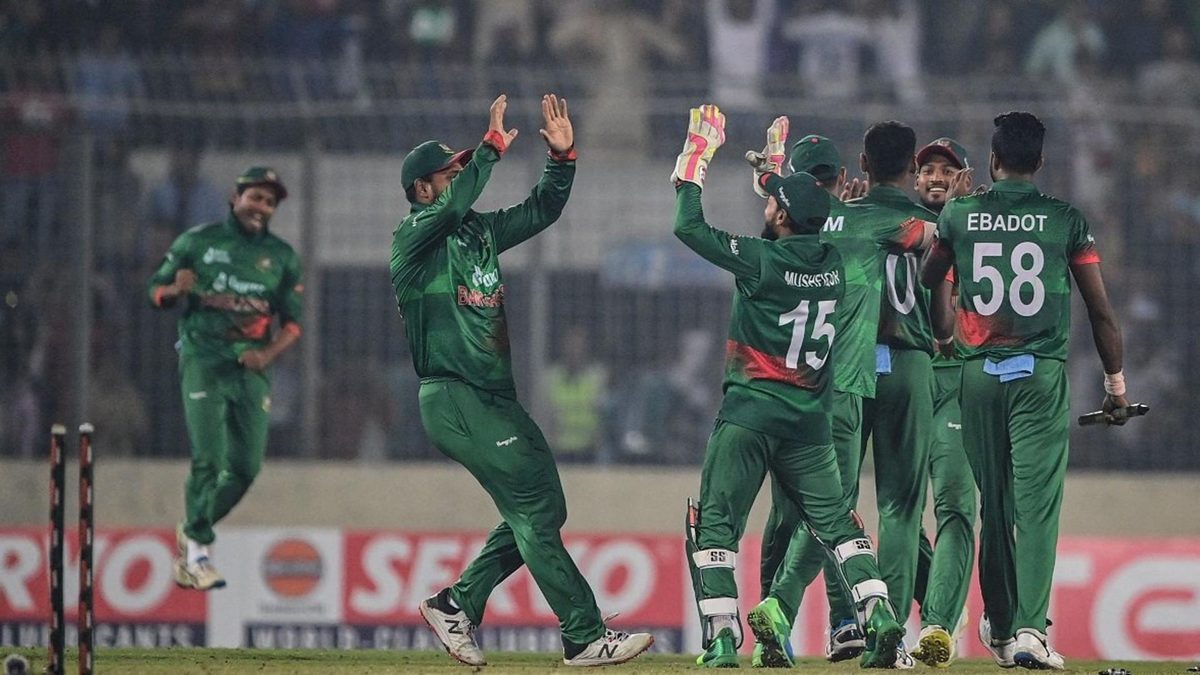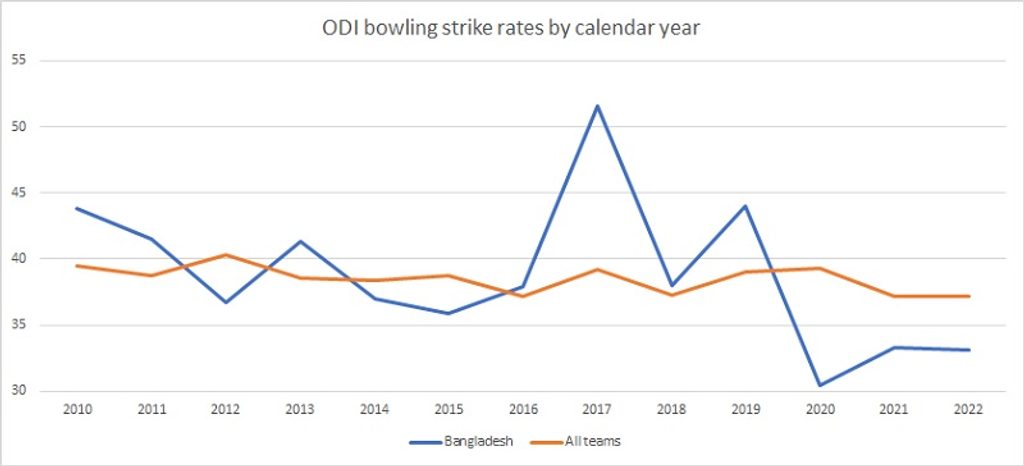
With series wins against South Africa and India, Bangladesh find themselves in near-unchartered territory. In conditions not too different from home, they may be dark horses for next year’s World Cup in India.
Bangladesh’s historical win-loss ratio in ODIs stands at a sub-par 0.586 (146 wins, 249 defeats), but that number reads 0.957 since 2010 (91 wins, 95 defeats), similar to the 0.968 (30 wins, 31 defeats) between the start of 2016 and the COVID-19 outbreak of 2020. They did not resume cricket until January 2021, and the T20 World Cup pushed them to a second hiatus, between July 2021 and February 2022.
Despite that, Bangladesh have played 26 ODIs since the pandemic, winning 18 and losing the rest. This includes two 3-0 sweeps of the West Indies, home and away; another 3-0 sweep in Zimbabwe; a series win in South Africa; and home series wins against Sri Lanka, Afghanistan, and now India. Their two series defeats – in New Zealand and Zimbabwe – have not only been away from home but outside the Indian subcontinent.
In other words, it has been some time since Bangladesh have lost an ODI series in conditions similar to what they will face in next year’s World Cup, in India.
This year, they have played 10 matches and won four. Their win-loss ratio (2.5) has been bettered by Pakistan (eight wins, one defeat) and Afghanistan (eight wins, three defeats). But unlike Bangladesh, who have won a series in South Africa, Pakistan’s and Afghanistan’s numbers have been buoyed by 3-0 wins against the Netherlands. At this point, only India, New Zealand, and England – three of the four semi-finalists of the 2019 World Cup – are the only teams ahead of them in the ICC Cricket World Cup Super League.
Indeed, Bangladesh’s streak at home has been incredible. While they have lost away from the familiarity of home, Bangladesh have now won seven consecutive bilateral series in Bangladesh. Their last defeat at home came against England, in 2016/17 – and even that came after a run of six more series wins on the trot.
Since 2014/15, they have been virtually invincible at home, losing only to a side that would go on to become the next world champions of the format. Over the same period, they pipped Pakistan, Sri Lanka, and Afghanistan to reach the Asia Cup final, in 2018. They were bowled out for 222, but India completed that chase only off the last ball of the match.
They are taking more wickets
What brought about this recent switch in their fortunes? The first reason is obvious: their bowlers are taking wickets more often than they used to. Between the start of 2010 to global lockdown, their bowlers struck every 40.3 balls. Since cricket resumed, that number has dropped to 33.2. In other words, they now take nine wickets in a 50-over innings on an average. In 26 matches, they have bowled out the opposition 14 times and taken nine wickets on eight other occasions.
The improvement seems starker when pitted against the global strike rates over the same era. The bowlers are now taking wickets more often than the average rate.

The change has largely been inspired by their quartet – Shakib Al Hasan, Mehidy Hasan Miraz, Mustafizur Rahman, and Taskin Ahmed. They might have made their debuts at different points in the history of Bangladesh cricket, but at this point, Barring Shakib, none of the others are 28 yet, but all of them have at least five years worth of ODI experience behind them.
Over this period, Shakib has taken a wicket every 30 balls (in other words, twice in a 10-over spell), while the corresponding numbers for Mustafizur and Mehidy read 33 and 31. All three have conceded under 4.6 an over (for Shakib, it is as low as 3.89). With a 25-wicket cut-off, Shakib’s economy rate is the best among the teams to have qualified for next year’s World Cup; and only Rashid Khan (4.22) and Mitchell Starc (4.27) separate Shakib from Mehidy (4.52) and Mustafizur (4.59), third and fourth on the list. Taskin – strike rate 43, economy 4.94 – is the fourth-best, but would probably have enjoyed a better rank for other sides.
Their batting, on the other hand, has not shown significant improvement. However, in Tamim Iqbal, Mushfiqur Rahim, Mahmudullah, Shakib, and Litton Das, they have a formidable quintet. There is also Mehidy 2.0, who has rediscovered his batting prowess from his Under-19 days.
A pub quiz question
Who was the last man to lead Bangladesh in a men’s ODI on Indian soil? The answer, curiously enough, is Habibul Bashar – back in the 2006 ICC Champions Trophy. To make it worse, that tournament is the only time Bangladesh have played men’s ODIs on Indian soil in the 21st century (they had played in the 1989/90 Asia Cup and the 1998 Coca-Cola Triangular Series).
Of the many hurdles awaiting Bangladesh in next year’s World Cup, lack of cricket on Indian soil may rank close to the top. While the conditions back home are not entirely different, they are not exactly the same either.
In the end, it may come down to whether their form and ability to take wickets frequently can make up for their lack of ODI experience in India.








